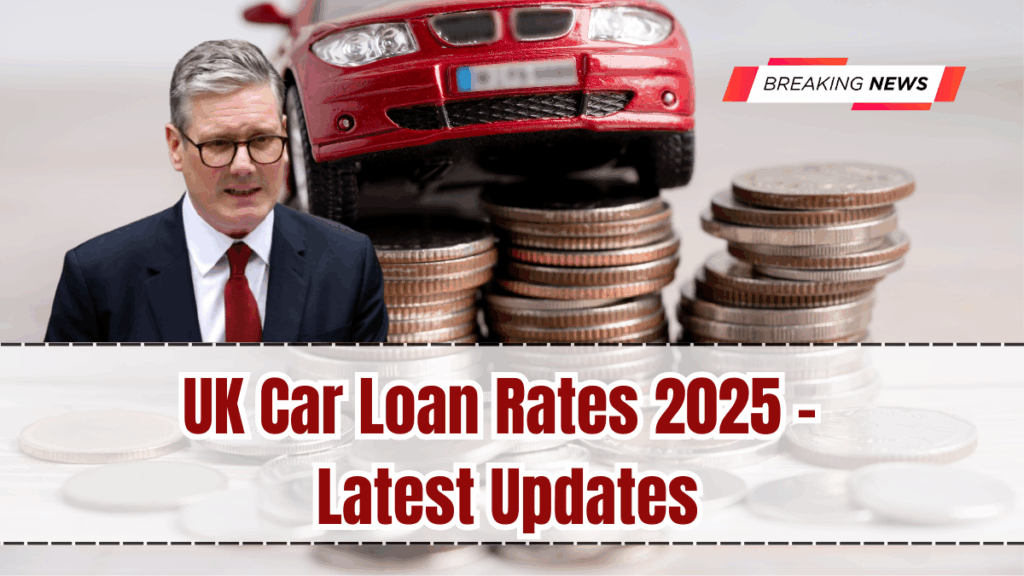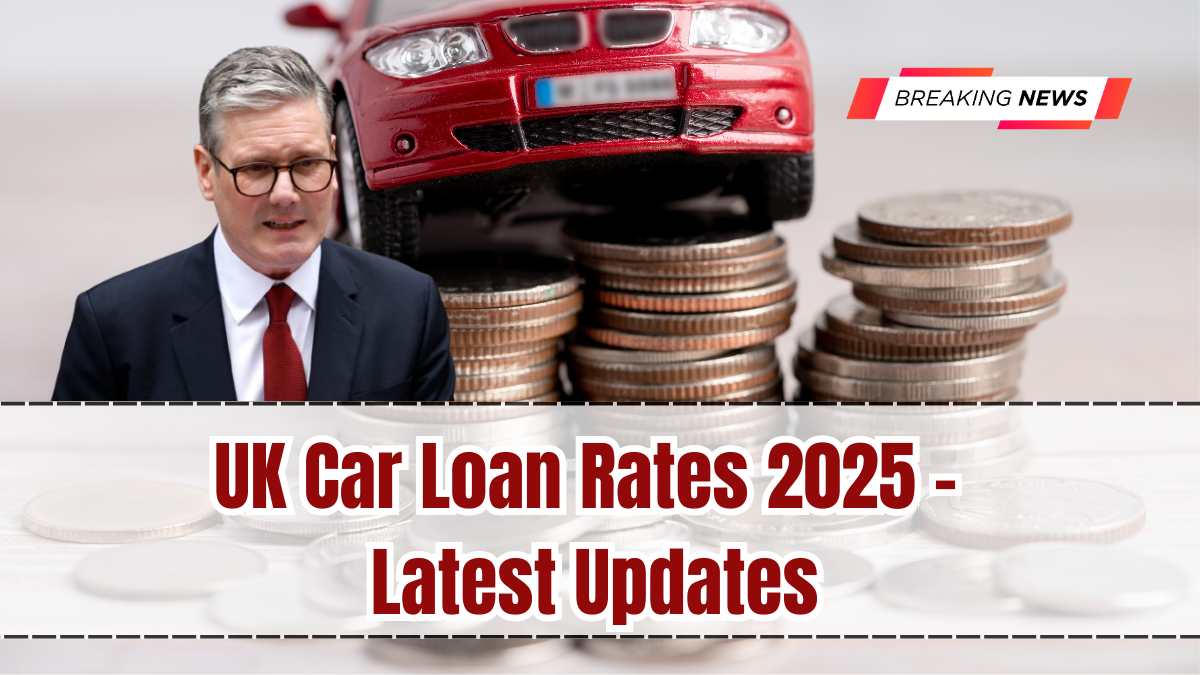Financing remains one of the most common ways for Britons to purchase vehicles, whether new or used. In 2025, however, borrowing has become more expensive as interest rates remain elevated. UK Car Loan Rates 2025 are shaping how buyers approach the auto market, influencing affordability and long-term ownership decisions.
With car prices already high and insurance premiums climbing, loan costs are another pressure point for households. Understanding current rates and trends is essential for drivers planning to finance a vehicle this year.

Average Car Loan Rates in 2025
The average car loan interest rate in the UK is now between 7% and 10%, depending on credit history and loan type. For buyers with excellent credit, rates can dip closer to 6%, while those with poor credit may face rates above 12%.
New car loans generally have lower rates than used car loans, reflecting reduced risk for lenders. However, the gap between them has narrowed, as rising demand for used vehicles has increased financing risks.
Why Loan Rates Are Higher
Several factors explain the increase in UK Car Loan Rates 2025. The Bank of England’s decision to keep base interest rates high to control inflation has directly impacted lending costs.
Additionally, the auto market is under pressure from rising prices, with new cars averaging £35,000 and used cars at £17,500. Higher loan amounts increase lender risk, which is reflected in higher interest charges.
Inflation in repair costs, insurance, and everyday expenses also influences affordability, making lenders cautious and more selective when offering loans.
Loan Terms and Borrower Behavior
Many buyers are responding to higher rates by extending loan terms. Five- and six-year loans are now common, allowing borrowers to reduce monthly payments. While this provides short-term relief, it also increases the total cost of borrowing.
Younger buyers often rely on longer terms, while wealthier drivers sometimes prefer shorter loans to reduce overall interest. Leasing has also become more attractive, providing lower monthly payments without the burden of ownership.
Regional and Demographic Differences
Borrowing patterns vary across the UK. Urban areas such as London and Manchester see higher average loan amounts, as buyers tend to purchase newer or premium models. Rural areas lean toward smaller loan sizes, though financing remains essential for families without reliable public transport.
Demographics also shape borrowing behavior. Younger borrowers often face higher rates due to limited credit history, while middle-aged buyers with stronger financial records secure better terms. Retirees, meanwhile, are often turning to personal loans rather than car finance for flexibility.
The Role of Electric Vehicles
EV adoption is reshaping UK Car Loan Rates 2025. Lenders are beginning to offer special financing packages for electric vehicles, supported by government incentives. Some banks provide reduced rates for eco-friendly cars, encouraging more buyers to switch to sustainable options.
However, higher upfront prices for EVs still pose challenges, and buyers must carefully weigh long-term savings from fuel and maintenance against higher monthly repayments.
How Borrowers Can Save on Loan Costs
Despite high rates, borrowers can take steps to reduce expenses. Improving credit scores before applying is one of the most effective strategies. A higher score often results in lower interest offers.
Shopping around between banks, credit unions, and online lenders helps identify better deals. Making a larger down payment also reduces the total loan amount, lowering both monthly installments and overall interest.
Shortening loan terms, while requiring higher payments, ultimately saves money. Buyers who can afford it should consider three- or four-year loans to minimize long-term costs.
Outlook for Car Loan Rates in the UK
The outlook for UK Car Loan Rates 2025 suggests that rates may remain elevated for much of the year. Unless the Bank of England cuts base rates, borrowers should prepare for continued financial pressure.
However, increased competition among lenders, digital finance platforms, and government-backed green loan programs may provide relief. Over time, innovation in auto finance could help balance affordability and accessibility for all buyers.
FAQs
What are the average UK car loan rates in 2025?
Rates range between 7% and 10% for most borrowers, with subprime rates exceeding 12%.
Why are car loan rates so high this year?
High base interest rates, rising car prices, and increased lender risks are pushing loan costs upward.
Are EV loans cheaper than petrol car loans?
Some lenders offer reduced rates for electric vehicles, supported by government incentives, though upfront costs remain high.
How can borrowers lower their loan costs?
Improving credit scores, making larger down payments, and comparing lenders are the most effective strategies.
Click here to know more.
